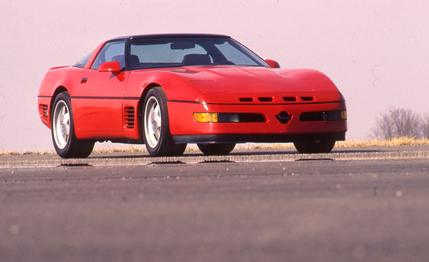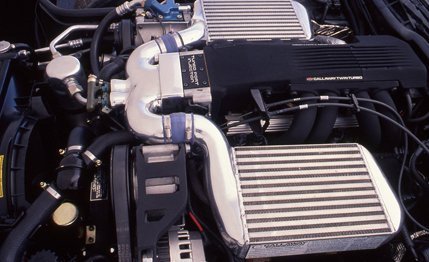 Archived Road Test
Archived Road Test
Here's how you get The Big Rush in a Callaway Twin-Turbo Corvette: at 75 mph, slide the gear lever from sixth to fifth and plant your right foot hard. The twin turbochargers whoosh, the seat scoops you up from behind, and the Callaway lunges ahead like a roller coaster taking the big plunge. Before you know it, you're catapulting past the 125-mile mark—and the beast is showing no signs of slowing down. It's ripping the air to shreds, surging ahead so fast that you've got to squint to make out the world in front of you. You try to tell yourself that this car can't be eating up the triple digits this fast. But it is.
Congratulations. You've just had your muscle tissue rearranged by 382 horsepower and 562 pound-feet of torque. As you slow down, your synapses begin to fire off a message to your brain's central-planning office that says, "More! More! Just one more, please!" The Big Rush. Try it once and you'll be hooked.
Hold your foot down long enough in sixth gear and the Callaway Twin-Turbo will haul itself all the way up to . . . well, we don't actually know. Since late 1986 we have sampled a total of five Callaway-modified Corvettes, but until now we've never swung a leg over a standard production model and ridden off into the sunset in search of truth and top speed. Now, after more than a thousand miles in the saddle and a foray onto the 7.5-mile oval at Ohio's Transportation Research Center, we find this most super of American supercars as much of a mystery ship as it ever was.
Let's return, for a moment, to established facts. The Callaway Twin-Turbo Corvette is quite simply one of the most powerful automobiles ever certified for sale by the EPA. Its turbocharged and intercooled 5.7-liter V-8 puts out a staggering 382 horsepower—more power than any U.S.-spec model currently sold by Ferrari or Porsche. In fact, we know of only one U.S.-market car that can top the Callaway's formidable power rating: the Lamborghini Countach, which belts out 425 hp. Even Chevrolet's forthcoming Corvette ZR-1 will be hard pressed to outpower the Callaway Twin-Turbo.

The Callaway isn't a normal production-line automobile, of course. It's a tuner special that occupies the hazy middle ground between mass-produced machines and hand-built one-offs. Owner Reeves Callaway's shop turns out only two or three cars each week, but as far as the government is concerned the Twin-Turbo is an ordinary Corvette. The EPA has given its blessing to the vitamin-enriched version, which means that no messy single-car certification is required. (Due to California's strict certification procedures, Callaways are not sold in the land of fruits and nuts.)
You should also know that the Chevrolet Motor Division thinks enough of the Callaway Twin-Turbo to treat it as just another regular production option. You can order the Twin-Turbo conversion at just about any Chevy dealer by checking the "RPO B2K" box on the standard Corvette order form. You even get a warranty: Callaway Cars covers the drivetrain for twelve months or 12,000 miles, and Chevrolet's normal warranty handles the rest. All that's left for you to worry about is how to convince your banker to loan you the extra $26,995 it costs to turn a regular Corvette into a Twin-Turbo.
By now it's probably beginning to dawn on you that creating a Callaway Twin-Turbo requires more than a simple backyard engine swap. A lot more, it turns out. Reeves Callaway and company could never be accused of aiming too low. Callaway's impressive facility in woodsy Old Lyme, Connecticut, is comprised of modern engineering offices, a large, sanitary machine shop complete with the latest computer-controlled equipment, and a separate Twin-Turbo assembly building.